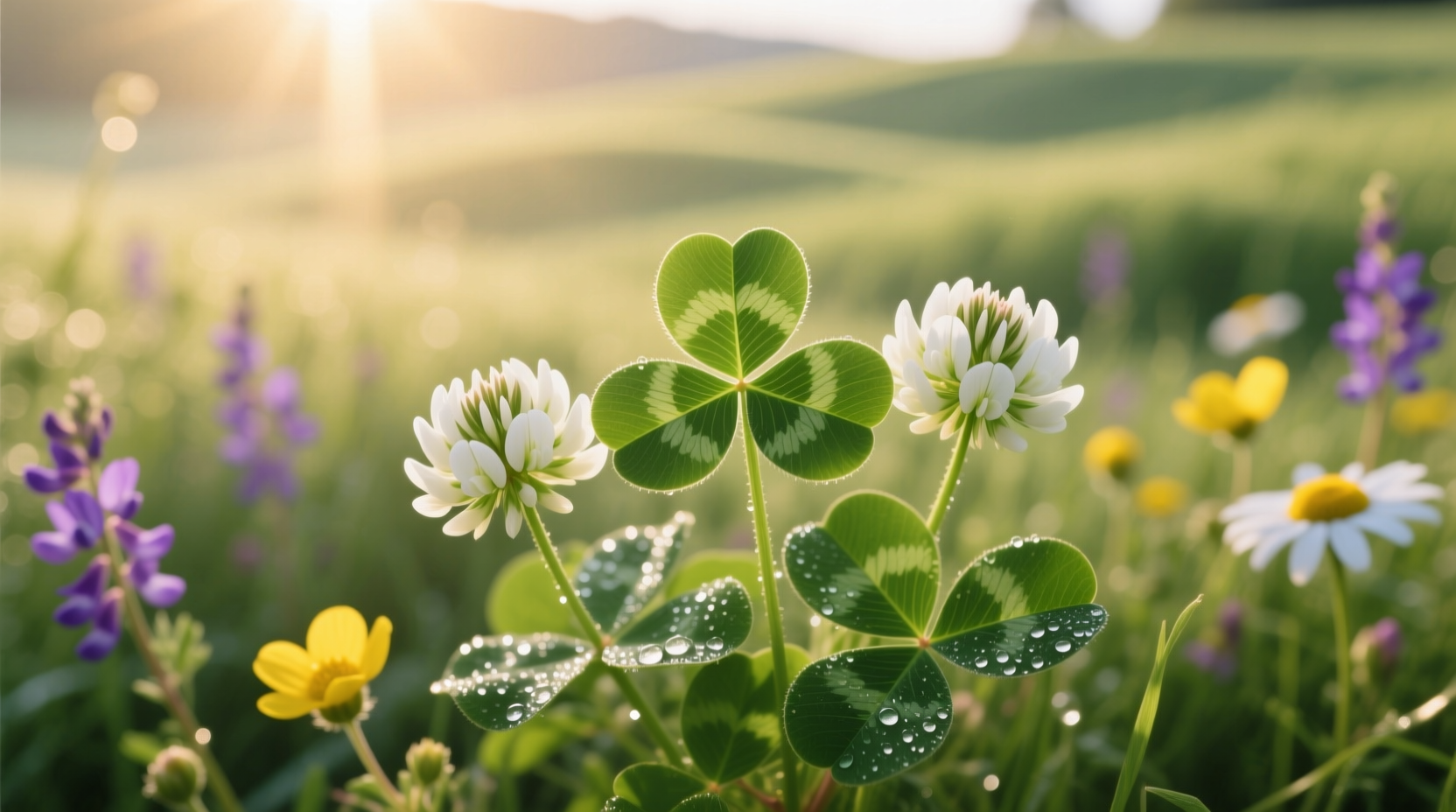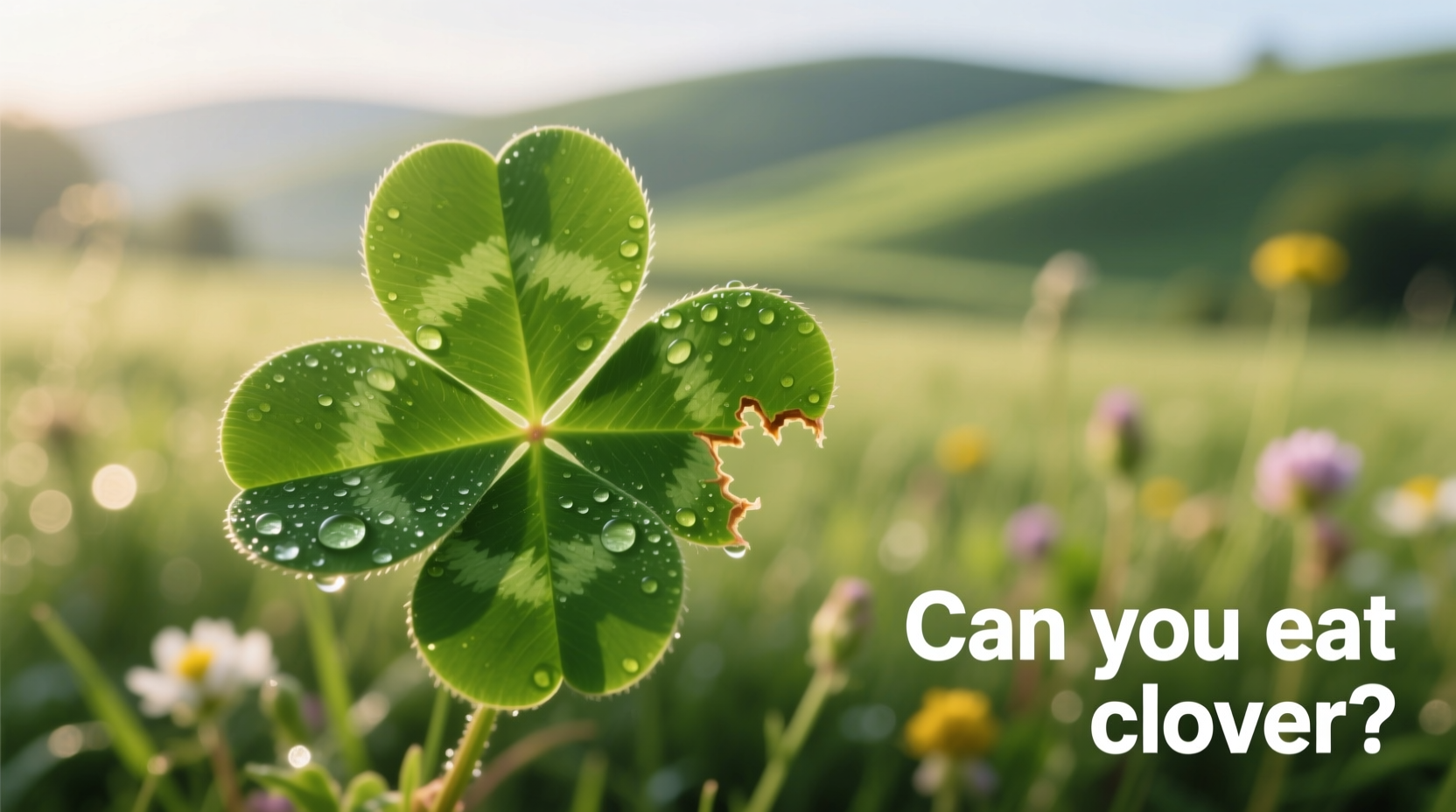Yes, you can eat certain types of clover safely, but with important caveats. White clover (Trifolium repens) and red clover (Trifolium pratense) are generally safe to consume in moderate amounts, while other varieties like alsike clover can be toxic. Proper identification is critical before consumption, as some clover look-alikes are poisonous. This guide provides science-backed information on edible clover species, preparation methods, nutritional benefits, and safety precautions.
Understanding Clover: Which Types Are Actually Edible?
Not all clover varieties are safe for human consumption. The most common edible species include white clover and red clover, which have been used as food sources for centuries. However, proper identification is essential before foraging, as some plants that resemble clover can be dangerous.
According to the USDA Agricultural Research Service, white clover contains compounds that can cause digestive upset when consumed in large quantities, while red clover has been traditionally used in herbal medicine but requires proper preparation to minimize potential risks.
| Clover Type | Edibility Status | Key Characteristics | Safety Notes |
|---|---|---|---|
| White Clover (Trifolium repens) | Edible in moderation | Low-growing, white flower heads, three leaflets | Contains cyanogenic glycosides; cook to reduce compounds |
| Red Clover (Trifolium pratense) | Edible with preparation | Taller plant, pinkish-purple flowers, darker leaf markings | May interact with blood thinners; avoid during pregnancy |
| Alsike Clover (Trifolium hybridum) | Not recommended | White or pink flowers, grows in clusters | Can cause photosensitivity and liver damage in livestock |
| Black Medic (Medicago lupulina) | Edible but not true clover | Yellow flowers, oval leaflets, grows low to ground | Often mistaken for clover; safe but less palatable |
Safety First: Critical Considerations Before Eating Clover
Before you consider adding clover to your diet, understand these important safety parameters. Clover contains compounds called cyanogenic glycosides that can convert to cyanide in the body. While the amounts in edible varieties are generally low, proper preparation significantly reduces potential risks.
The University of California's Agriculture and Natural Resources department notes that cooking clover effectively reduces cyanogenic compounds by up to 90%. Boiling is particularly effective, as the compounds leach into the water, which should then be discarded.
Context boundaries matter significantly when foraging clover. Never harvest clover from:
- Areas treated with pesticides or herbicides
- Lawns that may have been chemically treated
- Along roadsides where plants absorb pollutants
- Areas with high pet traffic (potential fecal contamination)

Nutritional Benefits of Edible Clover Varieties
When properly identified and prepared, clover offers several nutritional benefits. Both white and red clover contain:
- Significant amounts of vitamin C and K
- Flavonoids with antioxidant properties
- Protein content higher than many leafy greens
- Essential minerals including calcium and magnesium
Historical records from the USDA's ethnobotanical studies show that Native American tribes used red clover as a spring tonic and food source for centuries. The Iroquois people would boil young red clover shoots and eat them as a vegetable, while the Cherokee used white clover flowers to make a refreshing tea.
How to Safely Forage and Prepare Clover
Foraging clover safely requires careful identification and proper preparation techniques. Follow these steps to minimize risks while maximizing benefits:
Identification Checklist
- Confirm three leaflets per stem (true clovers always have three)
- Check for characteristic white "V" marking on white clover leaves
- Examine flower color (white, pink, or purple—not yellow)
- Verify the plant grows in typical clover habitats (meadows, lawns)
- Rule out look-alikes like oxalis (which has sour taste and heart-shaped leaves)
Safe Preparation Methods
Once properly identified, prepare clover using these methods:
- Boiling: Simmer leaves and flowers for 5-10 minutes, then discard cooking water
- Steaming: Steam young shoots for 3-5 minutes as a vegetable side
- Drying: Dry flowers for tea (reduces cyanogenic compounds)
- Raw consumption: Limit to small amounts of young leaves and flowers
The American Herbalists Guild recommends consuming no more than 1-2 tablespoons of raw clover daily, or up to 1 cup of properly prepared clover tea. Excessive consumption can lead to digestive upset or more serious health issues, particularly for individuals with certain medical conditions.
Who Should Avoid Clover Consumption?
While generally safe for most people in moderation, certain individuals should avoid clover entirely:
- Pregnant or breastfeeding women (due to potential hormonal effects)
- People taking blood thinners like warfarin (clover may enhance effects)
- Individuals with estrogen-sensitive conditions
- People with known allergies to legumes
The National Institutes of Health warns that red clover contains isoflavones that can mimic estrogen in the body. If you have a history of hormone-related cancers or are undergoing hormone therapy, consult your healthcare provider before consuming clover.
Common Mistakes When Foraging Clover
Many beginners make these critical errors when harvesting clover:
- Mistaking oxalis (wood sorrel) for clover—oxalis has a sour taste and heart-shaped leaves
- Harvesting from contaminated areas like roadside verges
- Consuming excessive amounts without proper preparation
- Confusing alsike clover with edible varieties
- Not checking local regulations about foraging in public spaces
Remember that proper identification is non-negotiable when foraging wild plants. When in doubt, leave it out. The North American Foraging Society recommends using multiple field guides and consulting with experienced foragers before consuming any wild plant.
Frequently Asked Questions About Eating Clover
Can you eat clover flowers raw?
Yes, you can eat clover flowers raw in small quantities. White and red clover flowers are generally safe when consumed in moderation, but cooking them reduces potential cyanogenic compounds. Limit raw consumption to a few flowers at a time, especially if trying clover for the first time.
How much clover is safe to eat?
For most healthy adults, consuming 1-2 tablespoons of raw clover leaves or flowers daily is considered safe. When cooked, you can safely consume up to 1 cup of prepared clover. Excessive consumption may cause digestive upset or more serious health issues due to compounds in clover.
What's the difference between edible and poisonous clover varieties?
True edible clovers (white and red) always have three leaflets per stem and distinctive flower colors. Poisonous look-alikes like oxalis have heart-shaped leaves and a sour taste. Alsike clover, which is not recommended for consumption, has white or pink flowers that grow in dense clusters. Proper identification requires examining multiple plant characteristics.
Can children eat clover?
Children can consume small amounts of properly prepared clover, but with caution. The American Academy of Pediatrics recommends that children under 12 avoid consuming wild plants without adult supervision and proper identification. If introducing clover to children, start with very small cooked portions and watch for any adverse reactions.
Does cooking clover remove all potential risks?
Cooking significantly reduces but doesn't eliminate all potential risks. Boiling clover for 5-10 minutes can reduce cyanogenic compounds by up to 90%, according to USDA research. However, certain compounds remain, which is why moderation is still important. Always discard the cooking water after boiling to remove leached compounds.











 浙公网安备
33010002000092号
浙公网安备
33010002000092号 浙B2-20120091-4
浙B2-20120091-4